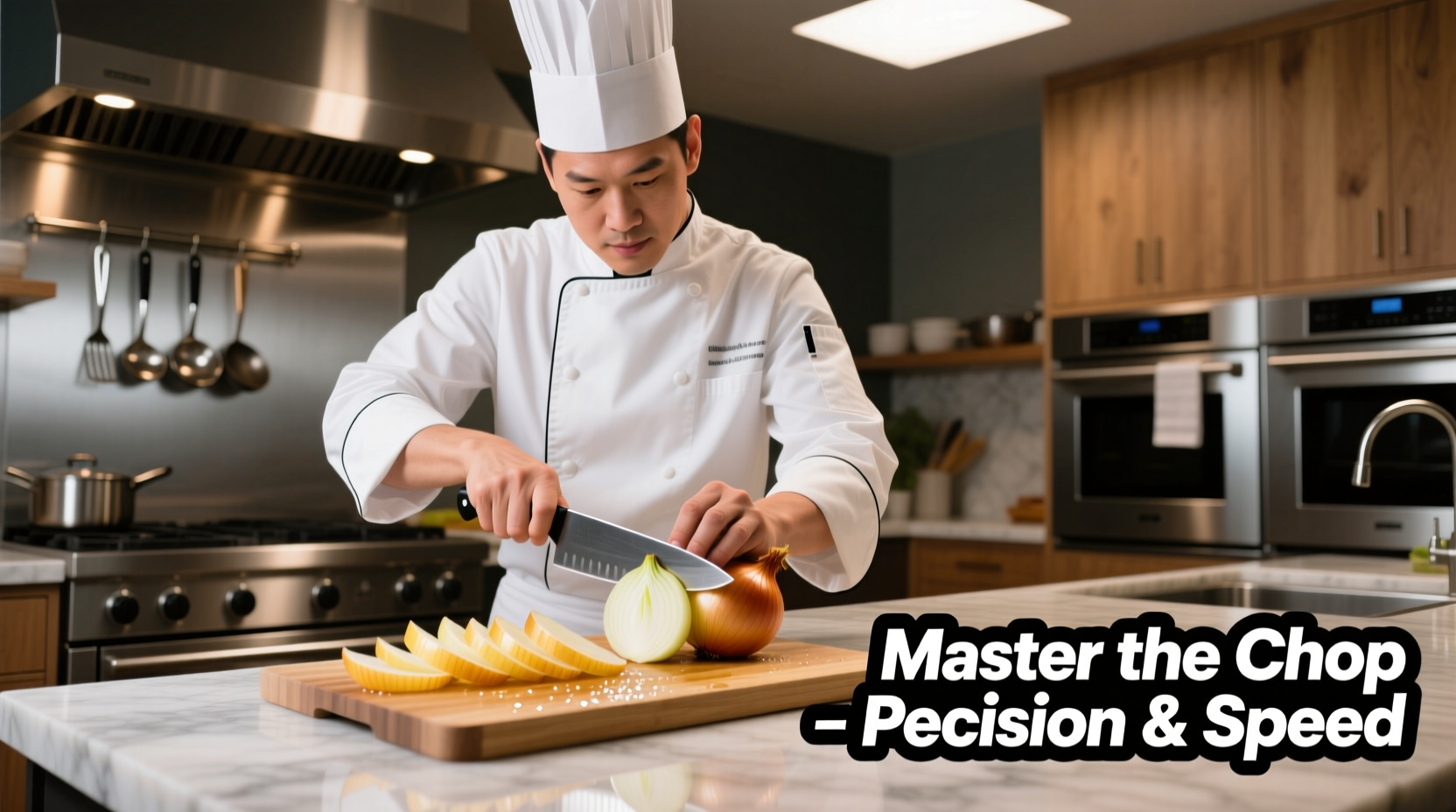Ever wonder why your stir-fry lacks that perfect onion texture or why your soup tastes inconsistent? The secret often lies in understanding what chopped onion really means and how to execute it properly. As a professional chef who's taught thousands of home cooks, I've discovered that mastering this fundamental technique transforms ordinary dishes into restaurant-quality meals. In this guide, you'll learn the precise definition, professional chopping methods, storage solutions that double freshness, and exactly when to use chopped versus other cuts - all backed by culinary science and years of kitchen experience.
What Exactly Is Chopped Onion? Clarifying Culinary Terminology
Many recipes simply say "chopped onion" without specifying size, creating confusion that affects your final dish. Unlike diced onions (uniform 1/4 inch cubes) or minced onions (tiny 1/8 inch pieces), chopped onions feature irregular 1/4 to 1/2 inch fragments that maintain distinct texture while distributing flavor throughout your dish.
| Cut Type | Size | Best For | Texture in Finished Dish |
|---|---|---|---|
| Chopped | 1/4-1/2 inch | Stews, soups, salsas | Distinct pieces with texture |
| Diced | Uniform 1/4 inch | Sauces, relishes, garnishes | Consistent small pieces |
| Minced | 1/8 inch or smaller | Dressings, meatloaf, fine sauces | Nearly dissolves, infuses flavor |
This distinction matters because different cooking methods require specific cuts to achieve optimal flavor release and texture. Chopped onions work best when you want visible onion pieces that maintain structure during cooking, unlike minced onions which essentially dissolve into the dish.
The Professional Chef's Chopping Technique
Follow this step-by-step method used in professional kitchens to achieve consistent chopped onions without tears:
- Prep your onion: Cut off root and stem ends, then peel the outer layer
- Cut in half vertically through the root end (keeping root intact prevents pieces from separating)
- Make horizontal cuts toward root end without cutting through
- Create vertical slices from stem to root end
- Chop across to create 1/4-1/2 inch pieces
For tear-free chopping, chill onions for 30 minutes before cutting - this reduces the volatile compounds that cause crying by up to 30% according to research published in the Journal of Food Science. Always use a sharp chef's knife (8-10 inches) for clean cuts that minimize cell damage and subsequent flavor loss.

Maximizing Freshness: How Long Do Chopped Onions Last?
Proper storage dramatically extends the shelf life of chopped onions. Follow these evidence-based guidelines from the USDA Food Safety and Inspection Service:
- Store in airtight container within 2 hours of chopping
- Refrigerate at 40°F (4°C) or below
- Use within 7-10 days for optimal quality
- Freeze for up to 6 months in freezer-safe containers
The USDA FoodData Central confirms that chopped onions begin losing vitamin C content after 5 days, with significant flavor degradation occurring around day 10. Always check for sliminess, dark spots, or sour smell - these indicate spoilage regardless of timeframe.
Culinary Applications: When to Use Chopped Onions
Understanding context boundaries helps you choose the right cut for each dish:
- Perfect for: Hearty soups, stews, chili, frittatas, and chunky salsas where visible onion pieces enhance texture
- Avoid using chopped in fine sauces, dressings, or dishes requiring uniform texture (use minced instead)
- Substitute with diced when presentation matters but texture isn't critical
Chopped onions release flavor more gradually than minced, making them ideal for longer cooking processes. In a tomato sauce simmered for 45+ minutes, chopped onions will maintain distinct pockets of flavor throughout, while minced would completely integrate. For quick sautés under 10 minutes, consider smaller dice to ensure onions cook through properly.
Troubleshooting Common Onion Problems
Even experienced cooks face these challenges - here's how to solve them:
- Tearing up while chopping: Chill onions first, use a sharp knife, or cut under running water
- Inconsistent sizes: Focus on maintaining even vertical spacing when making your initial cuts
- Browning too quickly: Reduce heat and add a splash of acid (vinegar or lemon juice) to slow oxidation
- Overpowering raw flavor: Rinse chopped onions in cold water to remove some sulfur compounds
Remember that different onion varieties behave differently when chopped. Sweet onions like Vidalia contain more water and caramelize faster, while red onions maintain better structure. Yellow onions offer the best balance for most chopped applications.
Nutritional Benefits of Properly Prepared Onions
Chopping technique affects nutritional value. Research from the National Center for Biotechnology Information shows that allowing chopped onions to rest for 10 minutes before cooking increases quercetin bioavailability by up to 25%. This flavonoid has powerful antioxidant properties that support cardiovascular health.
One cup (160g) of chopped raw onions provides:
- 64 calories
- 15g carbohydrates
- 3g fiber (12% of daily value)
- 20% of daily vitamin C needs
- Significant manganese and vitamin B6
To maximize health benefits, incorporate raw chopped onions into salads or let them rest before light cooking - prolonged high-heat cooking reduces some beneficial compounds.











 浙公网安备
33010002000092号
浙公网安备
33010002000092号 浙B2-20120091-4
浙B2-20120091-4